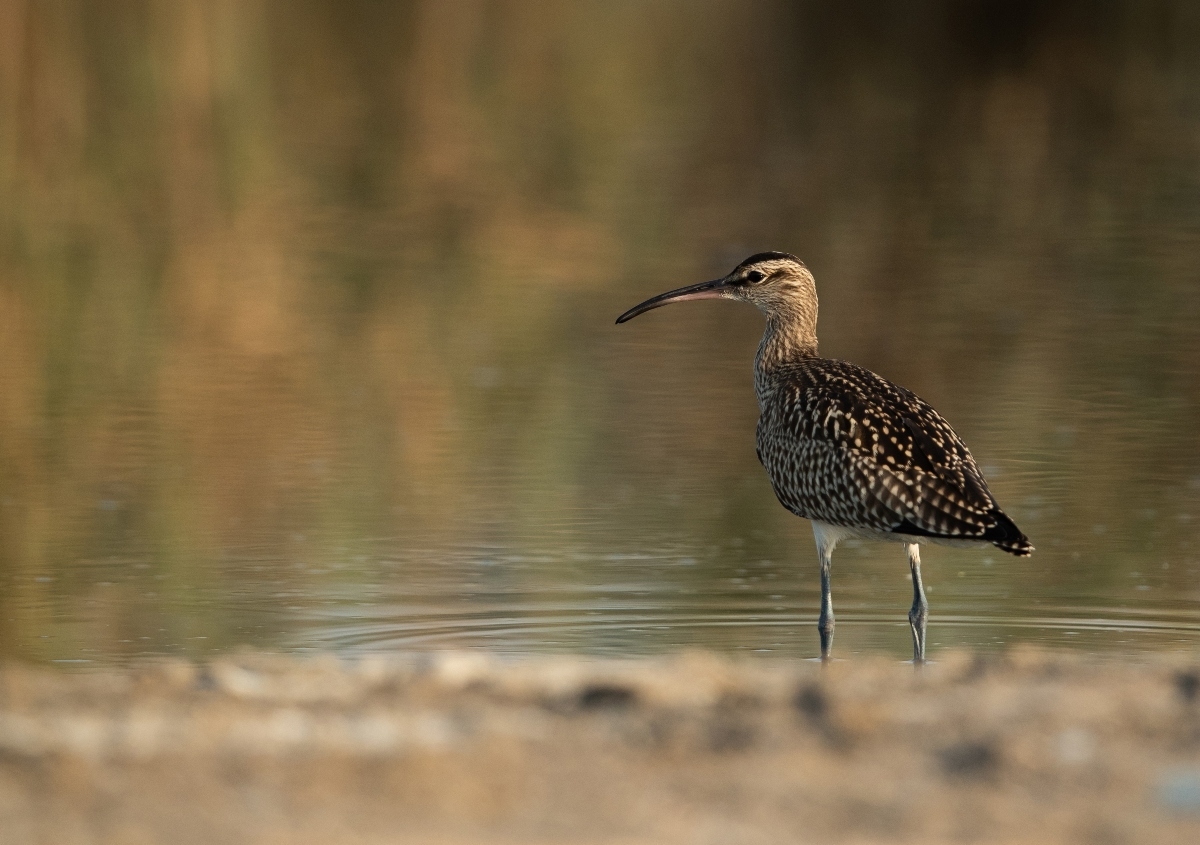The soft, haunting calls of the Whimbrel, a masterful long-distance migrant, often herald the changing of the seasons in coastal regions around the globe. With its distinctive curved bill and striated Crown, the Whimbrel is a familiar silhouette against the horizon, marking the ever-cyclic passage of time and nature’s rhythms.

Scientifically termed Numenius phaeopus, the Whimbrel is a medium-sized wader, part of the Curlew family. Spanning a length of around 37 to 47 cm, this bird showcases a mottled brown plumage that acts as a natural camouflage against the wetland landscapes it frequents.
The distinguishing feature of the Whimbrel is its long, down-curved bill, which is specialized for pRobing the mud and sand for invertebrates. Crustaceans, insects, and mollusks are staple items in its varied diet, which it skillfully extracts from the soft substrates of estuaries, tidal flats, and marshes.
However, it’s the Whimbrel’s remarkable migration journey that truly captures the imagination. These birds breed in the Arctic regions of North America and Eurasia, but as winter approaches, they embark on a tremendous journey, traveling thousands of miles to warmer, temperate, and tropical coasts in Asia, Africa, Europe, and Oceania.
Navigating this vast expanse requires impeccable timing and orientation skills. Their ability to fly non-stop over long distances is a testament to their physical endurance. These migration routes often lead them across diverse habitats, from coastal wetlands to open seas and even desert terrains.
The call of the Whimbrel, described by many as a series of seven notes, resonates across their habitats, a nostalgic melody that has been celebrated in folklore and literature in cultures wherever they travel.
Like many migratory birds, the Whimbrel faces threats during its epic travels. Habitat loss, particularly the draining and development of wetlands, poses a significant challenge. Additionally, disturbances during their breeding season can have detrimental effects on their population.
In many cultures, the Whimbrel’s appearance heralds the approach of monsoons or the arrival of spring. They stand as symbols of perseverance, change, and the interconnectedness of ecosystems.
To witness a flock of Whimbrels, their slender forms silhouetted against a setting sun, is to be reminded of nature’s grandeur and the delicate balance of life on our planet. Conservation efforts targeting the protection of their migratory routes and breeding grounds are crucial to ensuring that the echoing calls of the Whimbrel continue to mark the passing of seasons for generations to come.
In the vast tapestry of avian life, the Whimbrel stands as a testament to the wonders of migration, endurance, and the cyclical nature of life. The story of this wader is an inspiration, encouraging us to respect and protect the intricate web of life that connects us all.